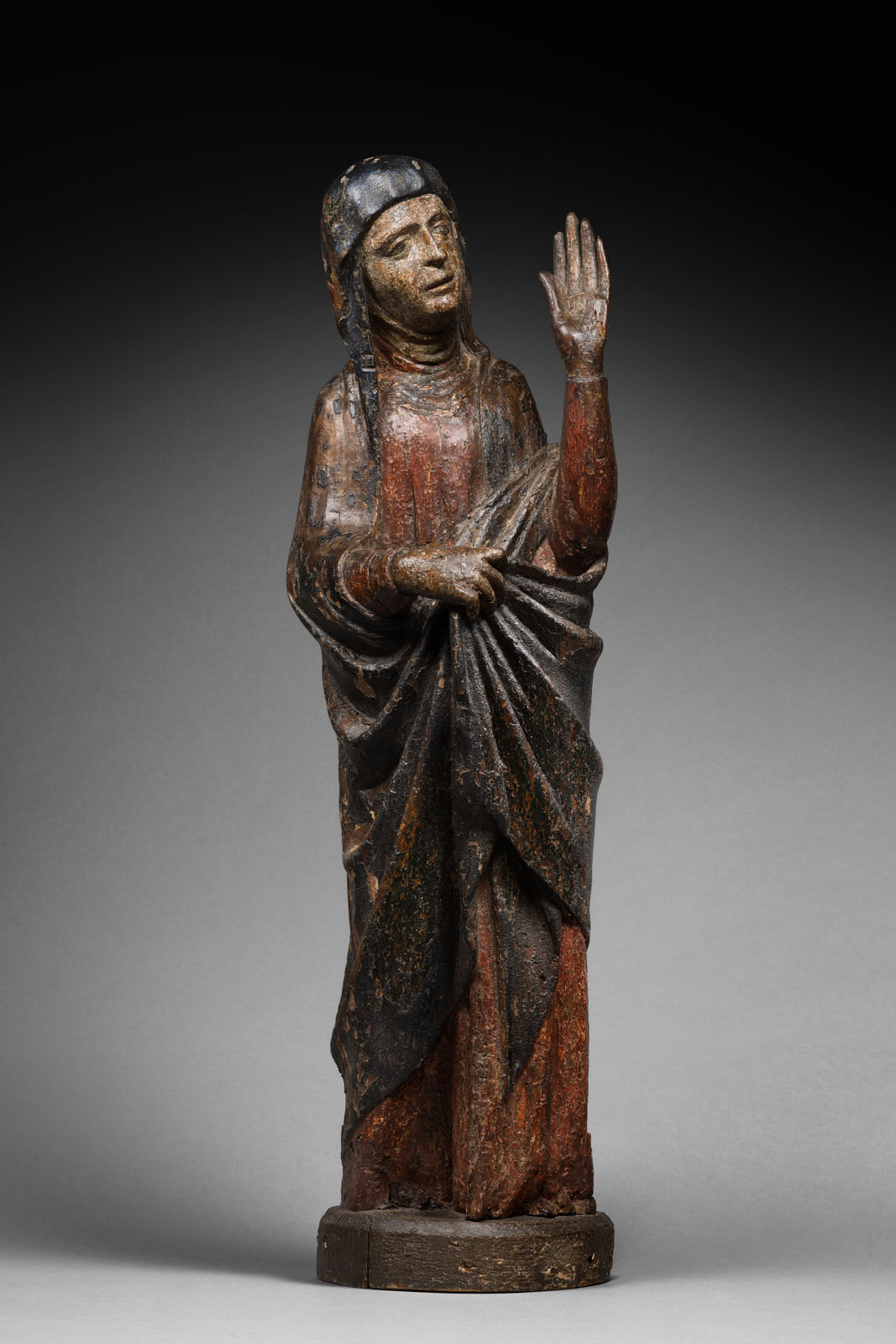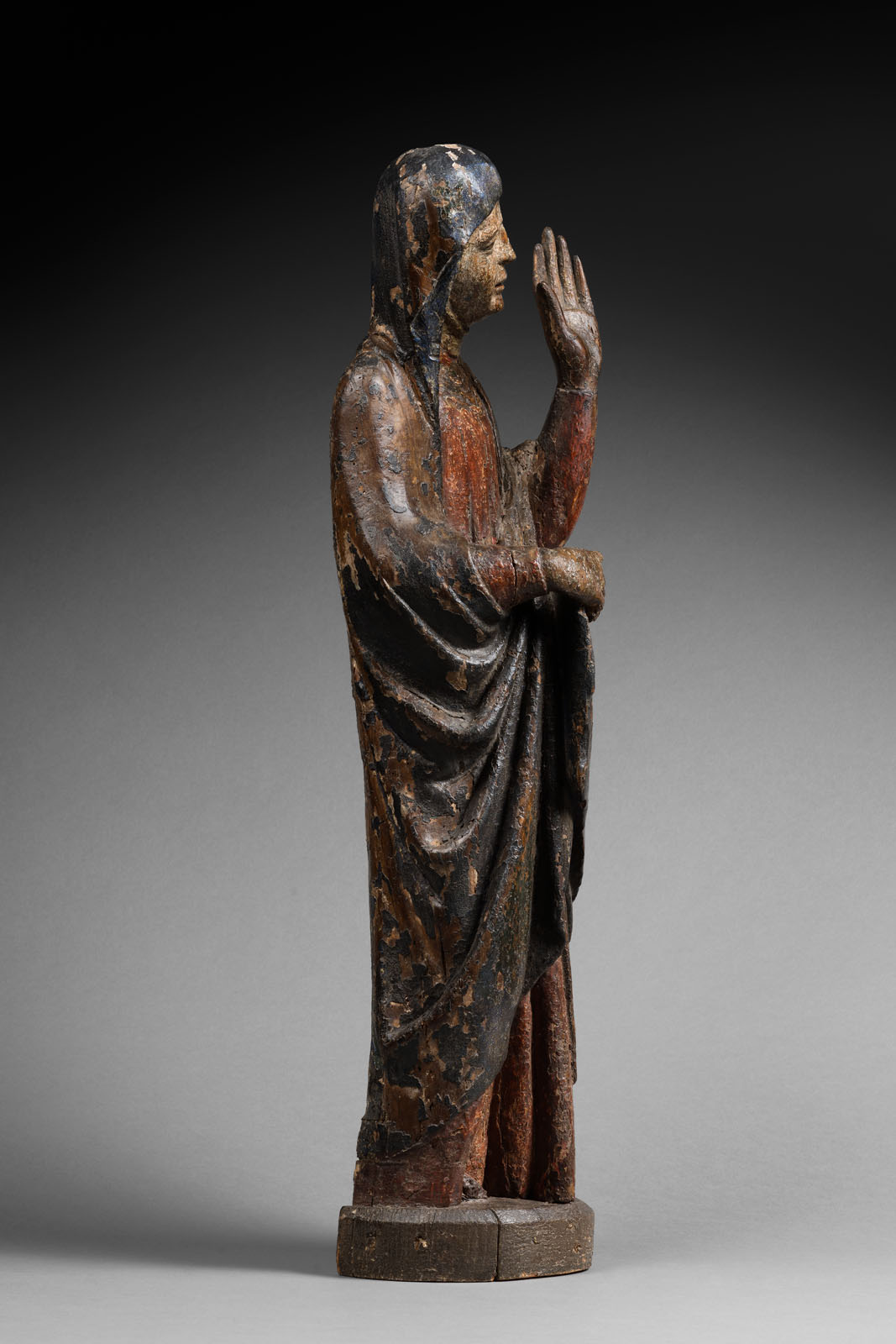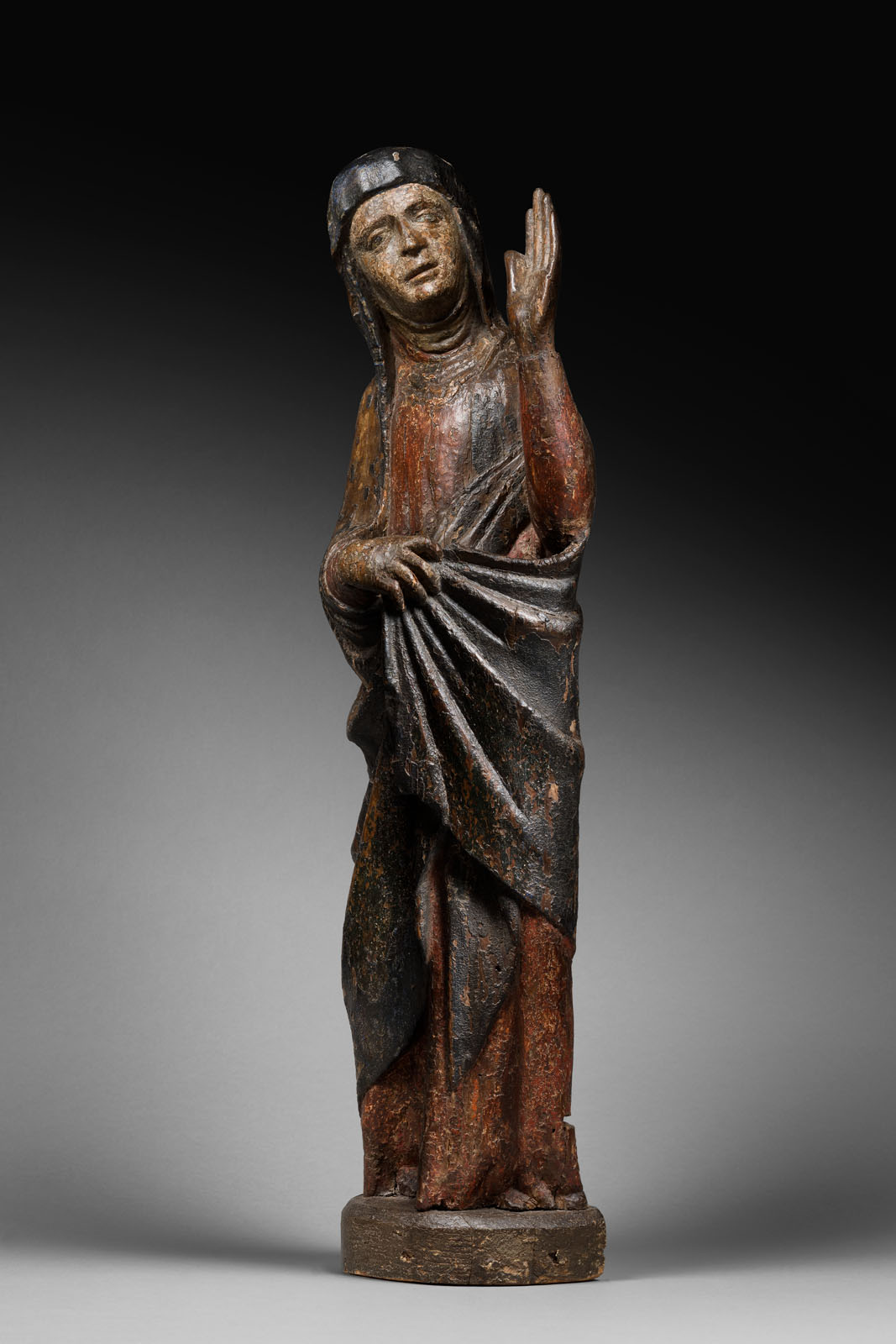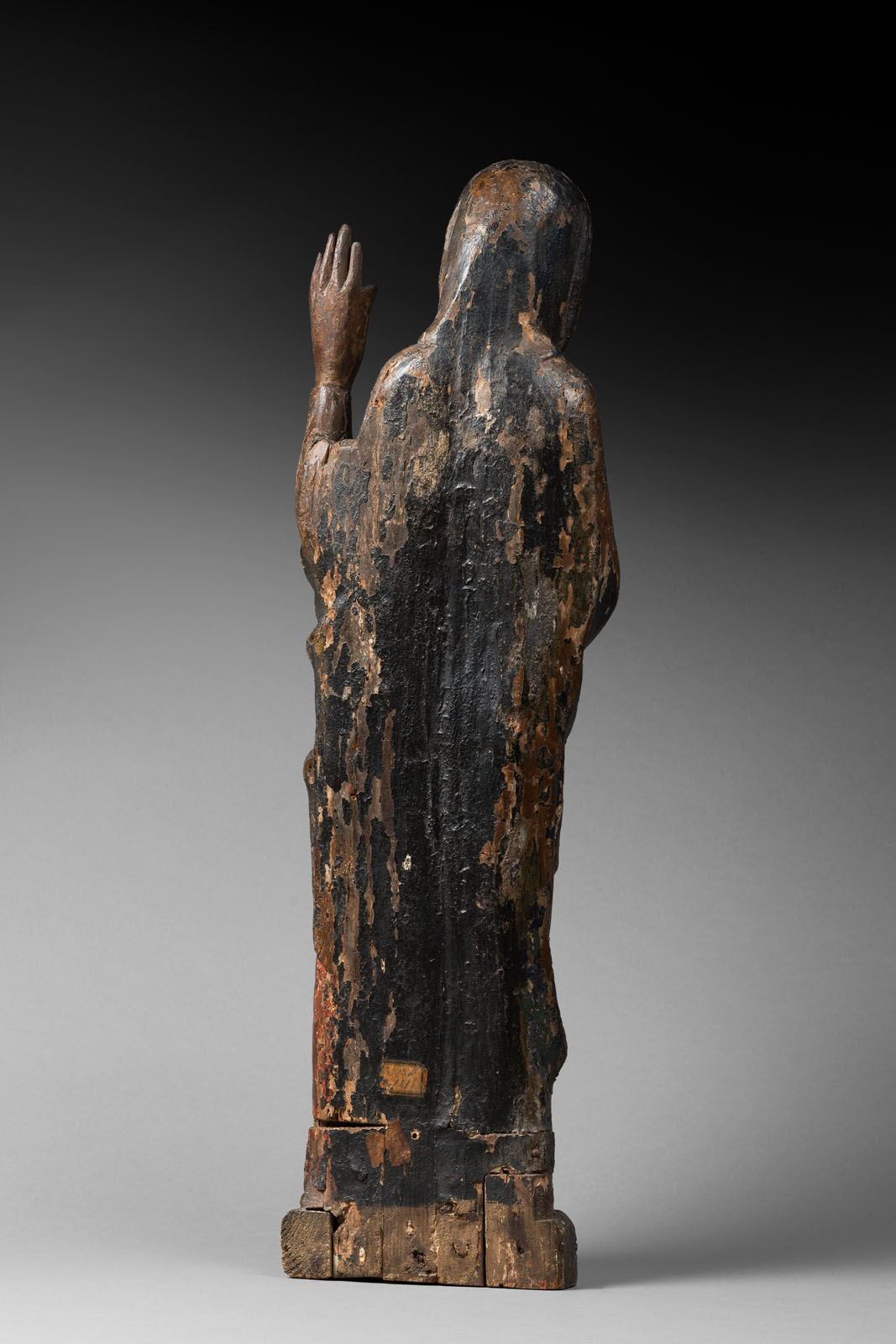Description
This rare sculpture of a Virgin of Calvary originally belonged to an ensemble depicting the Crucifixion. The Virgin would be accompanied by a sculpture of the apostle John, both flanking the Christ. Depictions of Joseph of Arimathea and Nicodemus could complete the ensemble.
The portrayal of the Descent from the Cross had to be a touching and moving scene for the viewer. Quite rare during the 10th and 11th centuries this particular scene of the Passion was very much in favour during the 12th century before other scenes took over in turn.
Mary is standing with her head slightly tilted to her right shoulder. In a gesture of intercession she raises her left hand – note the long and delicate fingers – towards the missing Christ while with her right hand she holds her cloak around her elbow. Those calm and restrained movements break with the hieratism of Romanesque sculpture. It shows the desire of the sculptors from this second half of the 13th century to bring life to their work.
Mary’s sad eyes and half-opened mouth mark her grief.
She wears a tunic with a cloak covering her head and straight shoulders. Along her body the cloak breaks in curved folds.
This pensive Virgin, humble and delicate with her realistic features shows a new spirit in sculpture that would then evolved towards Gothic. Her long fingers, the curved folds of her cloak locate this artwork at the crossroad of the Romanesque and Gothic periods. The Virgin of Calvary is a remarkable example of the work of Italian sculptors from the third quarter of the 13th century.




